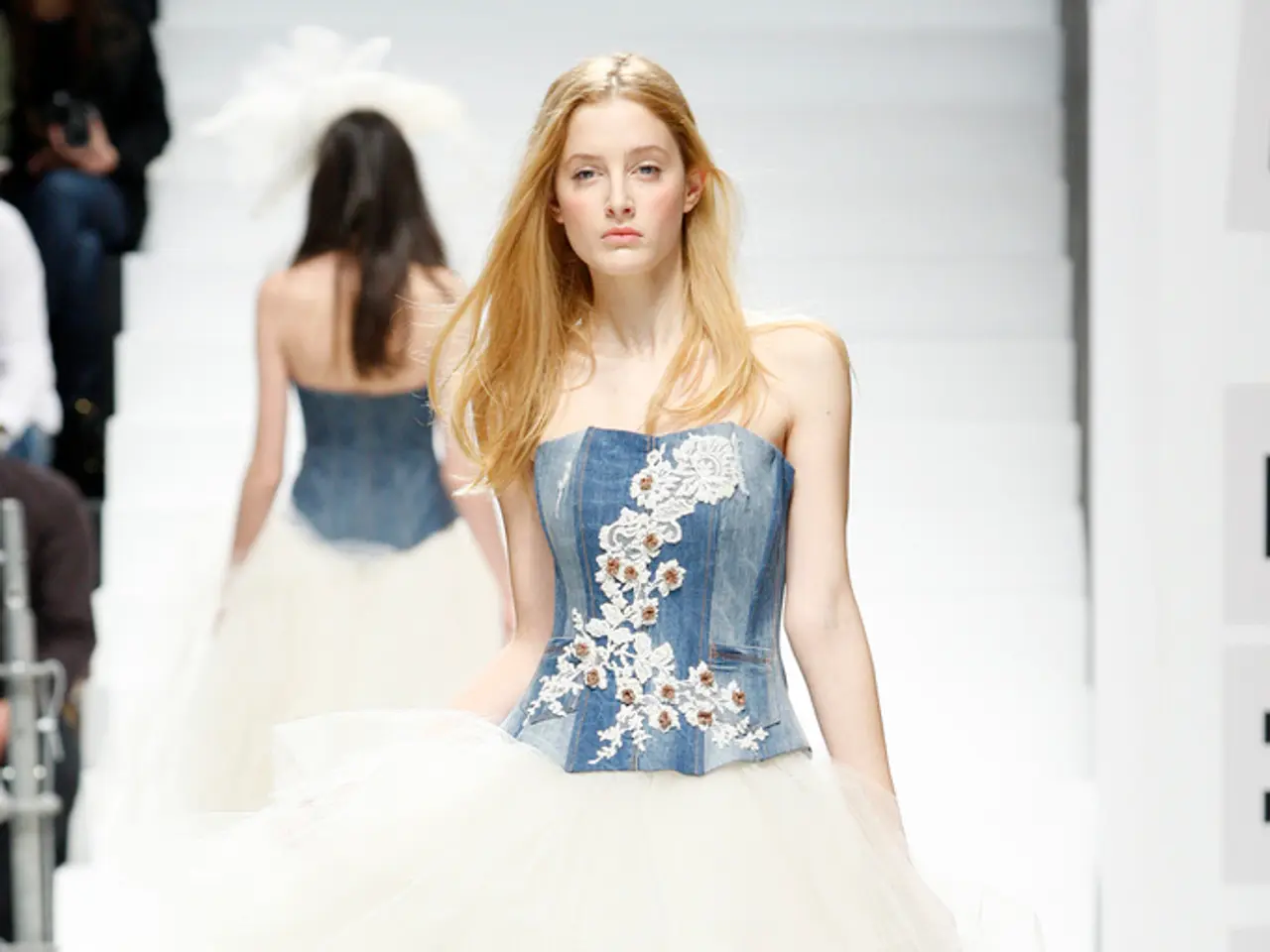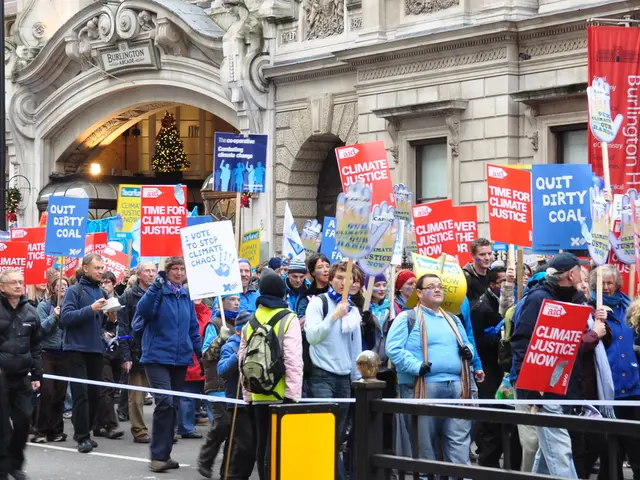Impact of Latest Trends on Fashion Industry's Commercial Sector
The fashion industry is undergoing a significant transformation, with personalisation, sustainability, and digital innovation at the forefront. This shift aligns with the growing emphasis on customer-centricity, as businesses strive to meet the evolving needs of consumers.
Online fashion is predicted to grow at a Compound Annual Growth Rate (CAGR) of 7.18% and reach a value of $1.0 trillion in the next five years, reflecting the increasing preference for digital shopping experiences. Platforms such as Instagram Shopping, Facebook, and Pinterest are being leveraged by fashion businesses to showcase their offerings, build brand recall, widen their consumer base, and stay engaged with customers.
One example of this digital-first approach is ASOS, which provides personalised fitting recommendations to customers, making the shopping experience more convenient and tailored.
The rise of Direct-to-Consumer (D2C) offerings, known as Digitally Native Vertical Brands (DNVBs), is disrupting traditional fashion business models. Brands like The Man Company, a homegrown brand disrupting the men's fashion landscape, are demonstrating the potential of this approach.
Sustainability is another critical concern in the fashion industry. Leading businesses are revamping their operational models to consider ethical and environmental implications. The Sustainable Apparel Coalition (SAC), a global alliance, is working towards sustainability in the fashion industry. The SAC's Higg Index is a suite of tools used to measure businesses' environmental and social impact across the value chain.
Project SURE in India has laid down a framework to ensure sustainability and positively impact apparel businesses. H&M, a global fashion retailer, has also taken steps towards sustainability, unveiling a Conscious Collection in 2020, which uses materials like organic cotton and recycled polyester.
The fashion industry is also addressing its environmental footprint. Textile dyeing is the second-largest contributor to water pollution, and fashion production accounts for 10% of total carbon emissions and leads to 20% water pollution. It is expected to lead to 26% of the global carbon footprint by 2050. The industry is making strides to reduce its impact, with initiatives like making a pair of jeans requiring 2,000 gallons of water, a significant reduction from the past.
The pandemic has accelerated trends in the fashion industry, leading to its evolution in the post-COVID world. Drop culture, where fashion products are posted on social media alongside their release date, is redefining fashion businesses to create a sense of urgency and ramp up sales. Using influencers to build brand credibility is another prominent trend.
The Fashion-as-a-Service (FaaS) model is reimagining the fashion business, allowing rental of clothes and fashion accessories. This model aligns with the growing emphasis on sustainability, as it reduces waste and promotes the circular economy.
Deeper partnerships among all stakeholders are becoming essential to maintain a competitive edge in the fashion industry. As the industry continues to evolve, it's clear that innovation, sustainability, and customer-centricity will remain key drivers of change.
Sources: - The Sustainable Apparel Coalition (SAC) - Project SURE - UNEP on Fast Fashion
Read also:
- Peptide YY (PYY): Exploring its Role in Appetite Suppression, Intestinal Health, and Cognitive Links
- Toddler Health: Rotavirus Signs, Origins, and Potential Complications
- Digestive issues and heart discomfort: Root causes and associated health conditions
- House Infernos: Deadly Hazards Surpassing the Flames








